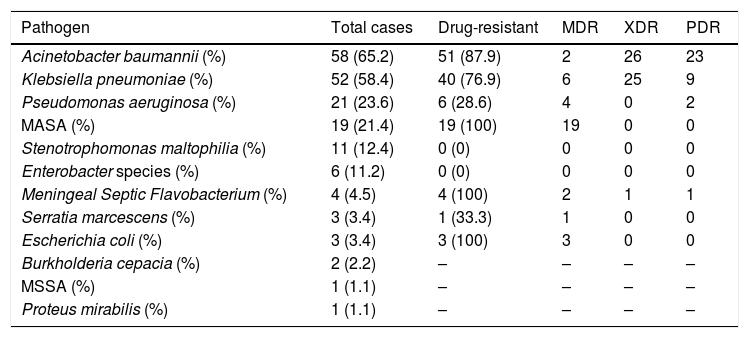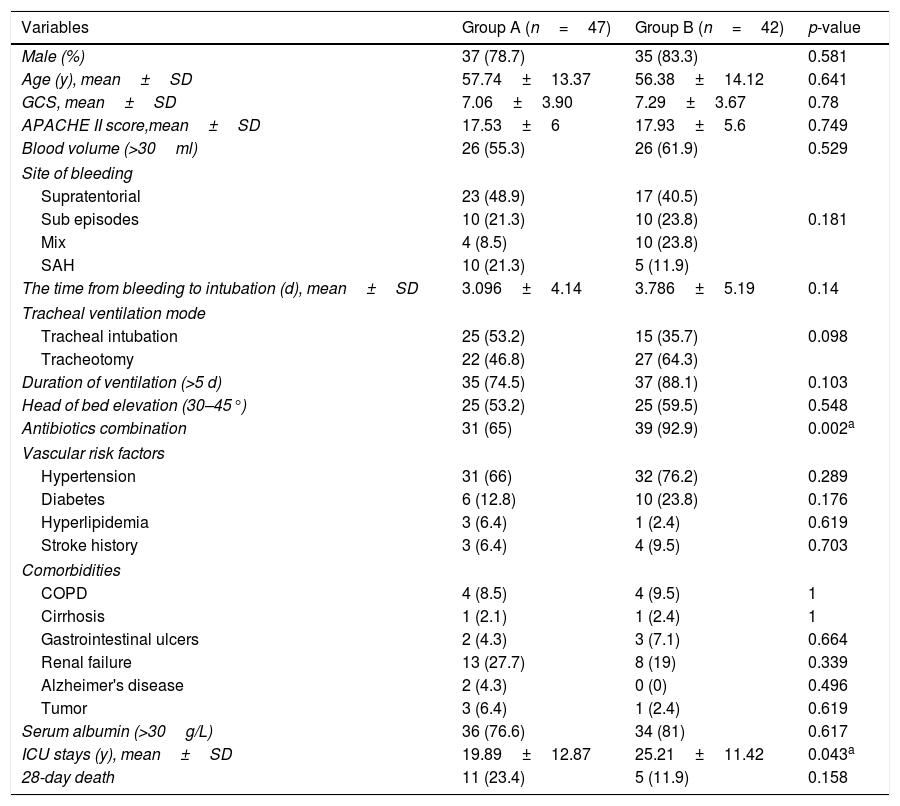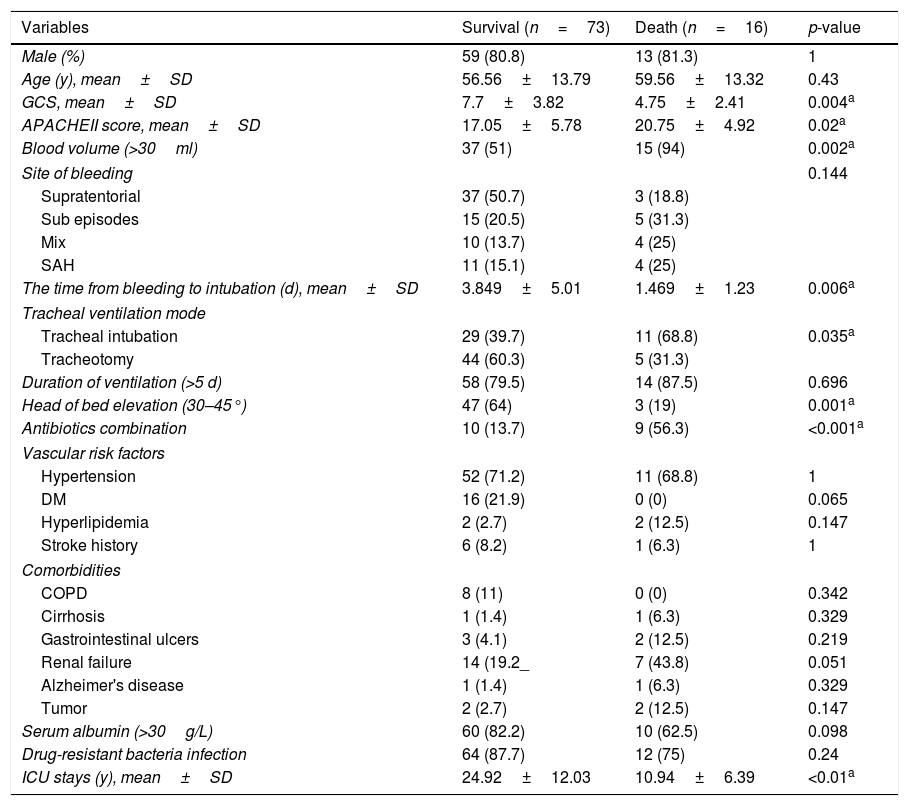Ventilator-associated pneumonia (VAP) is a major complication among critically ill patients who depend on mechanical ventilation. Few reports have focused on intracerebral hemorrhage patients with VAP. Our main objective was to investigate the bacteria distribution characteristics and the impact of ventilator-associated pneumonia mortality in critical cerebral hemorrhage patients. This retrospective study included 89 cases of cerebral hemorrhage patients with VAP admitted to the ICU of Huashan Hospital. We used the chi-square test to compare qualitative variables and Student's t-test to compare means between groups of normally distributed quantitative variables. Multiple logistic regression analysis was used to assess mortality-independent predictors in the ICU. A total of 42% patients with cerebral hemorrhage were diagnosed with VAP in the ICU during the study period, and the mortality rate was 18%. Acinetobacter baumannii (n=58), Klebsiella pneumoniae (n=52), and Pseudomonas aeruginosa (n=21) were the most common pathogenic bacteria. Blood volume >30ml, tracheal ventilation mode and head of bed elevation were independent factors associated with increased mortality. Glasgow Coma Scale (GCS), Acute Physiology and Chronic Health Evaluation II (APACHE II) score and the time from bleeding to intubation were other potentially important factors. While the number of infecting bacteria may not be directly related to death, it can increase antibiotic consumption and length of intensive care unit (ICU) stays. Blood volume >30ml, tracheal ventilation mode and head of bed elevation were directly related to the death of critical cerebral hemorrhage patients with ventilator-associated pneumonia.
La neumonía asociada a ventilación mecánica (NAV) es una complicación mayor entre los pacientes críticos que dependen de la ventilación mecánica. Pocos artículos se han centrado en los pacientes de hemorragia cerebral con NAV. Nuestro objetivo principal fue investigar las características de la distribución bacteriana y el impacto de la mortalidad de la neumonía asociada a ventilación mecánica en pacientes críticos de hemorragia cerebral. Este estudio retrospectivo incluyó 89 casos de pacientes de hemorragia cerebral con NAV ingresados en la unidad de cuidados intensivos (UCI) del Hospital Huashan. Utilizamos la prueba χ2 para comparar las variables cualitativas, y la t de Student para comparar las medias entre grupos de las variables cuantitativas normalmente distribuidas. Utilizamos análisis de regresión logística múltiple para valorar los factores predictivos independientes de la mortalidad en la UCI. Diagnosticamos NAV en el 42% de los pacientes con hemorragia en la UCI durante el periodo de estudio, y la tasa de mortalidad fue del 18%. Acinetobacter baumannii (n=58), Klebsiella pneumoniae (n=52) and Pseudomonas aeruginosa (n=21) fueron las bacterias patogénicas más comunes. El volumen sanguíneo >30ml, el modo de ventilación traqueal y la inclinación del cabecero de la cama fueron factores independientes asociados al incremento de la mortalidad. La Glasgow Coma Scale (GCS) y el Acute Physiology and Chronic Health EvaluationII (APACHE II), así como el tiempo transcurrido entre el sangrado y la intubación, fueron otros factores potencialmente importantes. A pesar de que el número de bacterias infecciosas puede no estar directamente relacionado con la muerte, puede incrementar el consumo de antibióticos y la duración de la estancia en la UCI. El volumen sanguíneo >30ml, el modo de ventilación traqueal y la inclinación del cabecero de la cama guardaron una relación directa con la muerte de los pacientes críticos de hemorragia cerebral con neumonía asociada a ventilación mecánica.










